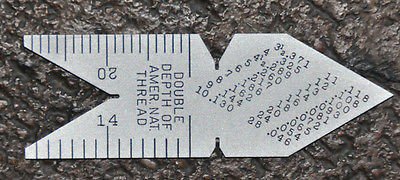One thing I'd suggest (since you didn't say it!), I set up dial indicators EVERYWHERE when I'm cutting threads! The dials are nice, but are no replacement for a good dial indicator.
First, put one on your ways against the carriage, this makes it WAY easier to 'stop' at the right place. I haven't had GREAT luck with cutting threads without the undercut (where the thread 'just stops'), but this indicator gives me the best results.
Second I put one on my cross-slide ways against the cross-slide. This allows me to make sure I get back to my zero spot, because messing this up even just a little can bisect/mess up threads pretty bad. I have actually discovered that I have a thread stop, so I used that the last time instead with good results.
Third, from the cross-slide to the compound (against a flat surface) measuring perpendicular to the ways. This gives you a great idea about the depth of cut and total depth of cut. The nice part is that this isn't susceptible to any other movements.
Another thing I'll suggest: HSS. Grab some bits and grind them. When I first started cutting threads, I did the Carbide inserts, however the instant I switched to HSS my cuts improved 10 fold. HSS has 3 advantages:
1- You can make them sharper than the carbide since you're grinding them yourself! This gives you a better chance against chatter.
2- HSS normally runs at about 40% of the RPMs of carbide. This means you can run the spindle at a much slower speed. I personally thread cut at my lathe's slowest speed when I can for exactly this reason!
3- HSS is WAY more tolerant of being run at below its speeds/feeds. Carbide I found wants to be at a specific RPM, HSS is much more forgiving.

